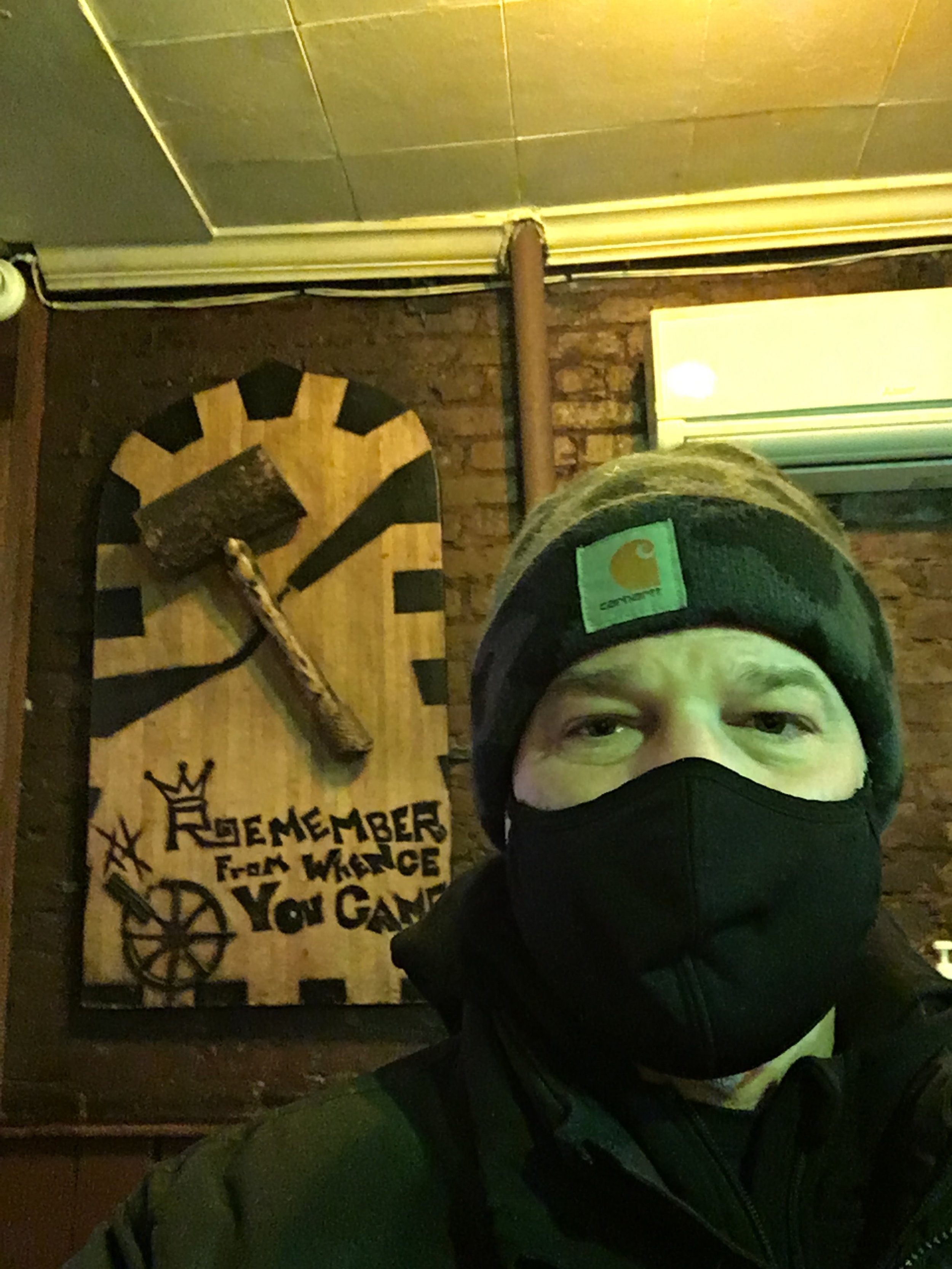
Biography
“The Atmosphere Was Electric”
-The Village Voice
Stuart Ross spent much of his anxiety-ridden childhood dissecting broken appliances in a dark New York City basement. A solitary tinkerer, he walked the streets of Queens amassing, dissecting, and reassembling antique millwork and early electronics. His reclusive traits were rewarded at fifteen when Ross’s creation of an electrically coded card (similar to today’s hotel key cards) was recognized with accolades, television interviews, and a college scholarship from Duracell International.
By his mid-twenties, Ross realized that what he was making was art: densely saturated, multisensory, electric-kinetic sculpture. Today his work is as it was at the beginning: reclaimed materials reanimated, art expressed amidst science, the industrial fused with the organic, and a study of the loss of the old world coming into the new.
In Ross’s work, materials from bygone eras are animated with electrical components—motors, levers, blowers, and light. The works merge such narrative modes as carpentry, metalwork, robotics, photography, principles of physics, painting, design, lighting, written word, humor, and diorama.
At first glance, Stuart Ross’s kinetic sculpture and public installations can appear festive and celebratory. Upon closer examination, deeper themes emerge. One finds humanity’s earliest machines in their initial triumph over nature, soon juxtaposed against the components and complexities of the modern age. Rhythmic motors push antiquated levers, and there is transfer of energy that leads the observer to a simpler time. Ross endeavors to create a sublime experience for the viewer in which they are gently led into a world of hypnotic movement and color.
Through his work, Stuart Ross artfully recalibrates the tensions between progress and the human spirit— and allows the ageless and the contemporary to converge.
For over twenty years, Ross’s dynamic work has been at home in New York City galleries and public spaces—streets, storefronts, and other open platforms—as well as natural settings such as Grand Manan Island in the Bay of Fundy. Ross is the subject of the award-winning 2008 documentary The Survival of the Wildebeest, an intimate look into his work and life as he prepares for a site-specific exhibit at New York’s iconic Astor Place Barbershop.

Biography
“The Atmosphere Was Electric”
-The Village Voice
Stuart Ross spent much of his anxiety-ridden childhood dissecting broken appliances in a dark New York City basement. A solitary tinkerer, he walked the streets of Queens amassing, dissecting, and reassembling antique millwork and early electronics. His reclusive traits were rewarded at fifteen when Ross’s creation of an electrically coded card (similar to today’s hotel key cards) was recognized with accolades, television interviews, and a college scholarship from Duracell International.
By his mid-twenties, Ross realized that what he was making was art: densely saturated, multisensory, electric-kinetic sculpture. Today his work is as it was at the beginning: reclaimed materials reanimated, art expressed amidst science, the industrial fused with the organic, and a study of the loss of the old world coming into the new.
In Ross’s work, materials from bygone eras are animated with electrical components—motors, levers, blowers, and light. The works merge such narrative modes as carpentry, metalwork, robotics, photography, principles of physics, painting, design, lighting, written word, humor, and diorama.
At first glance, Stuart Ross’s kinetic sculpture and public installations can appear festive and celebratory. Upon closer examination, deeper themes emerge. One finds humanity’s earliest machines in their initial triumph over nature, soon juxtaposed against the components and complexities of the modern age. Rhythmic motors push antiquated levers, and there is transfer of energy that leads the observer to a simpler time. Ross endeavors to create a sublime experience for the viewer in which they are gently led into a world of hypnotic movement and color.
Through his work, Stuart Ross artfully recalibrates the tensions between progress and the human spirit— and allows the ageless and the contemporary to converge.
For over twenty years, Ross’s dynamic work has been at home in New York City galleries and public spaces—streets, storefronts, and other open platforms—as well as natural settings such as Grand Manan Island in the Bay of Fundy. Ross is the subject of the award-winning 2008 documentary The Survival of the Wildebeest, an intimate look into his work and life as he prepares for a site-specific exhibit at New York’s iconic Astor Place Barbershop.


